| Cast-Ti principle of operation |
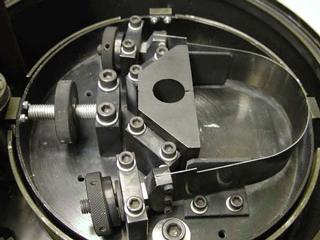 |
Cast-Ti principle of operation is simple: various sizes of molds can be horizontally fixed to a turn table at the bottom of the vacuum chamber.
The dimensions are such that the turn table can hold small molds for small single parts, medium molds for medium or multiple parts and a large mold for extended objects.
|
|
Maximum capacity per run is approx. 45g of titanium. Ingots with less height can be molten in the graphite crucible if a smaller quantitiy is required.
In order to achieve perfect results the electrode, the crucible support and the crucible must be adjusted and the turn table must be in balance.
|
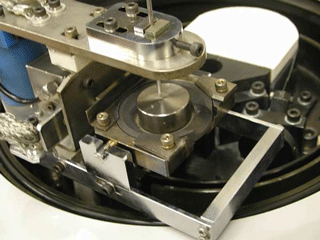 |
|
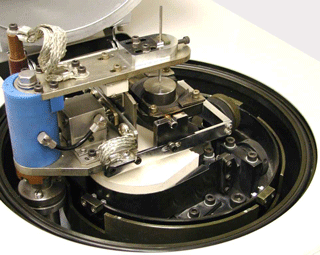 |
The entire melting appliance is to be aligned exactly along the axis of rotation to achieve the best fill of the spinning mold.
|
|
| Liquid titanium reacts with almost all elements of the atmosphere. To avoid contamination of the metal the vacuum chamber is evacuated for each casting by a two stage rotary vane vacuum pump down to 0.0007mbar and flushed with pure Argon 5.0 twice or more. The remaining fraction of atmosphere can be reduced down to 0.4ppm by this procedure. |
After the evacuation of the vacuum chamber the ingot is molten by an arc.
The melting process can be controlled by the arc current and melting time.
|
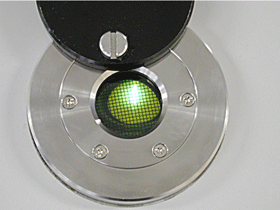 |
|
| The melting point of titanium is at 1668°C - therefore the liquid metal solidifies very quickly. To achieve a complete fill of the mold the liquid titanium must be brought to the mold as fast as possible. |
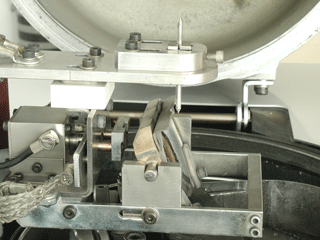 |
As soon as the titanium is liquid the crucible support is released and the crucible is tilted to pour the metal into the drop mold.
The distinctive feature of Cast-Ti is that the mold is spinning with the turn table at nominal speed of 3,000rpm before the metal is poured. This results in an acceleration of 800G applied to the metal when it hits the mold. Under these cicustances molds are filled within 20ms completely.
|
|
| A reproducible high quality casting result will be achieved with proper sprue dimensions and accurate preparation of the patterns. |
| Applications: |
|
|
|
| More information: |
| Brochure |